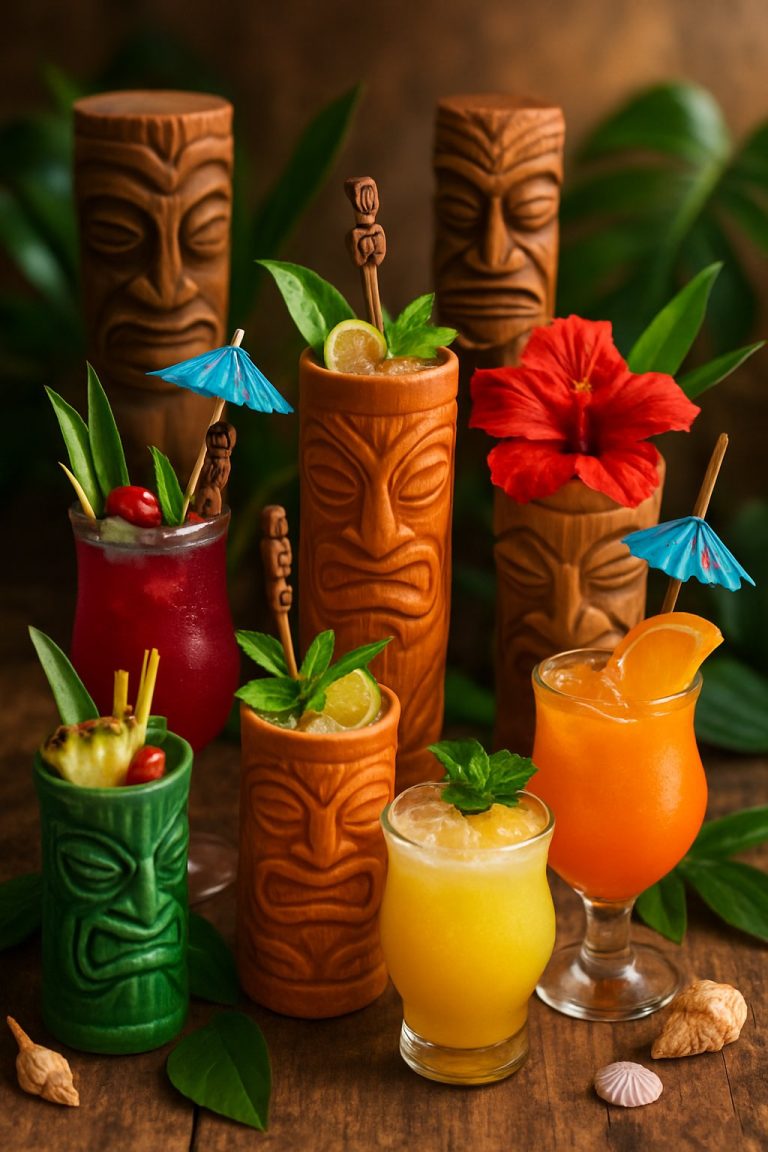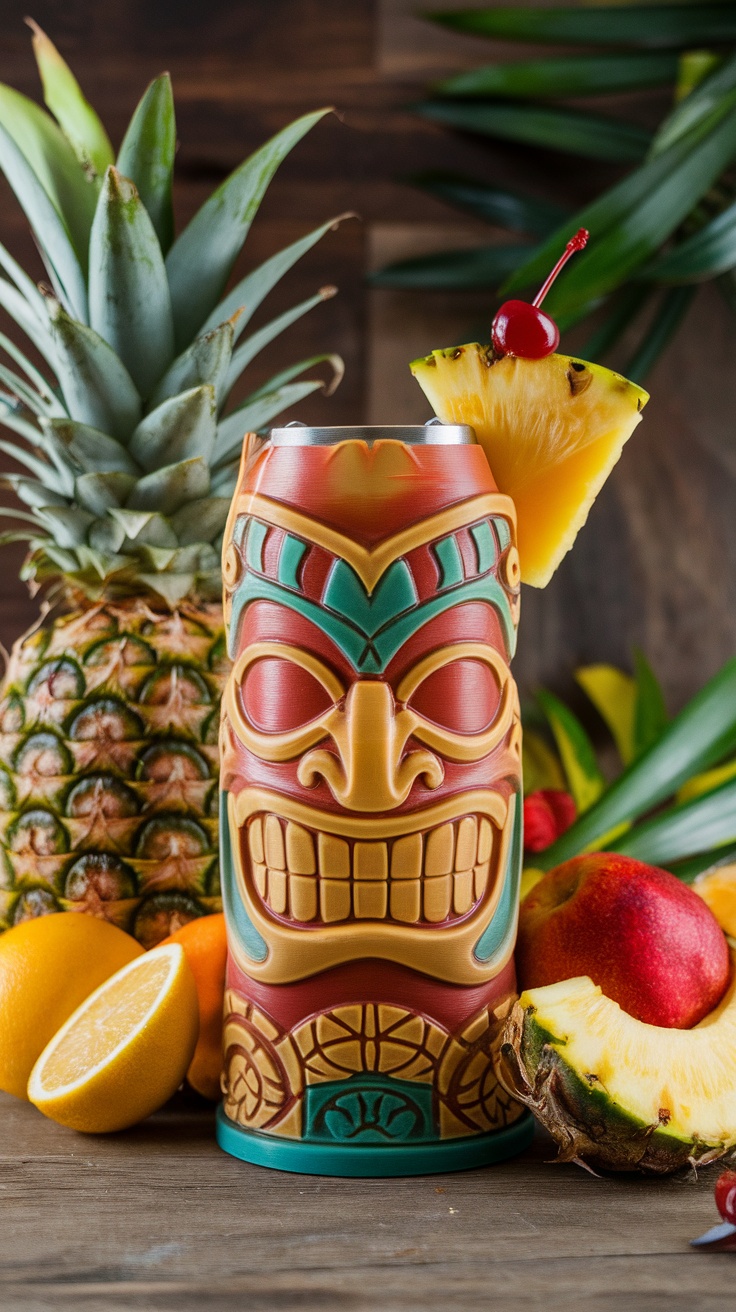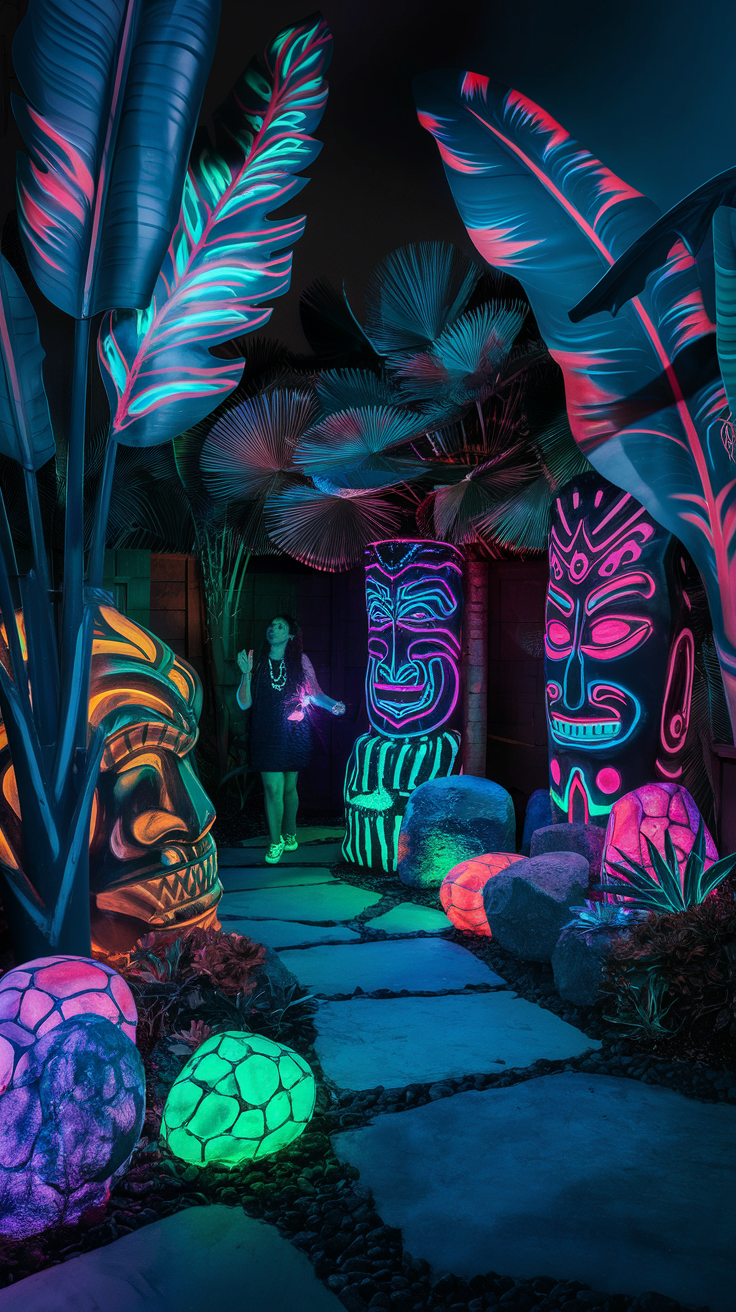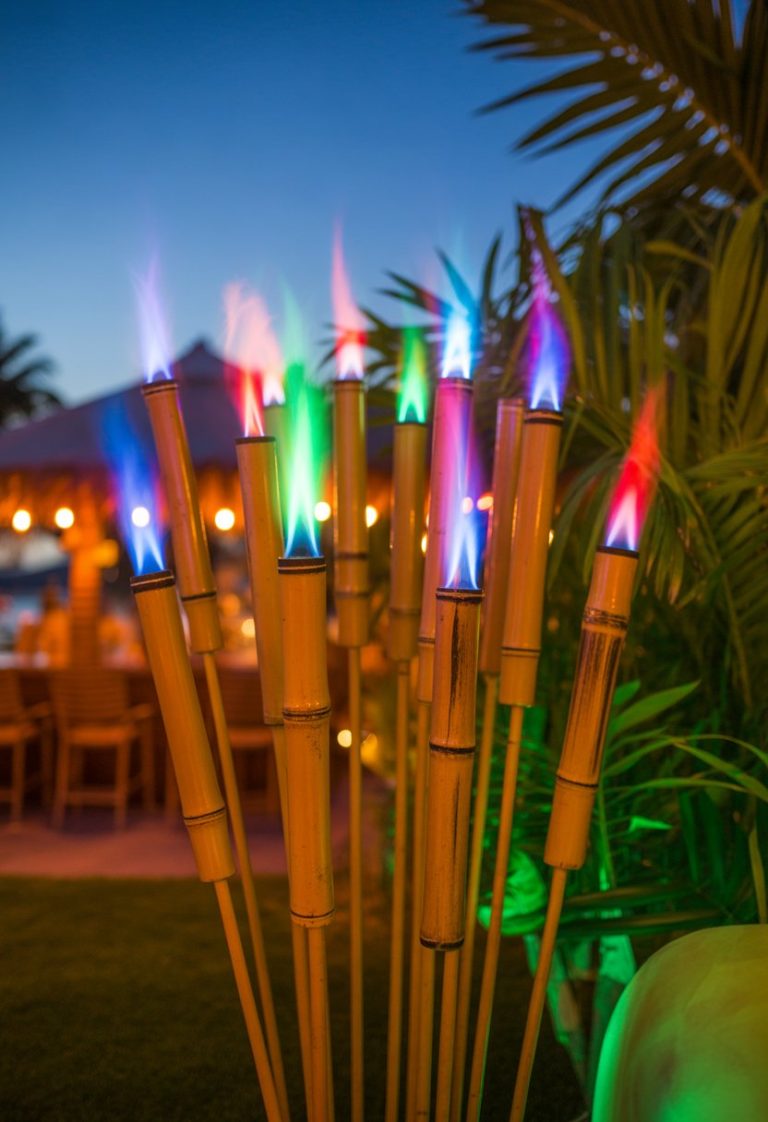Ritual & Rum: The Rise of the Tótem Tiki Aesthetic
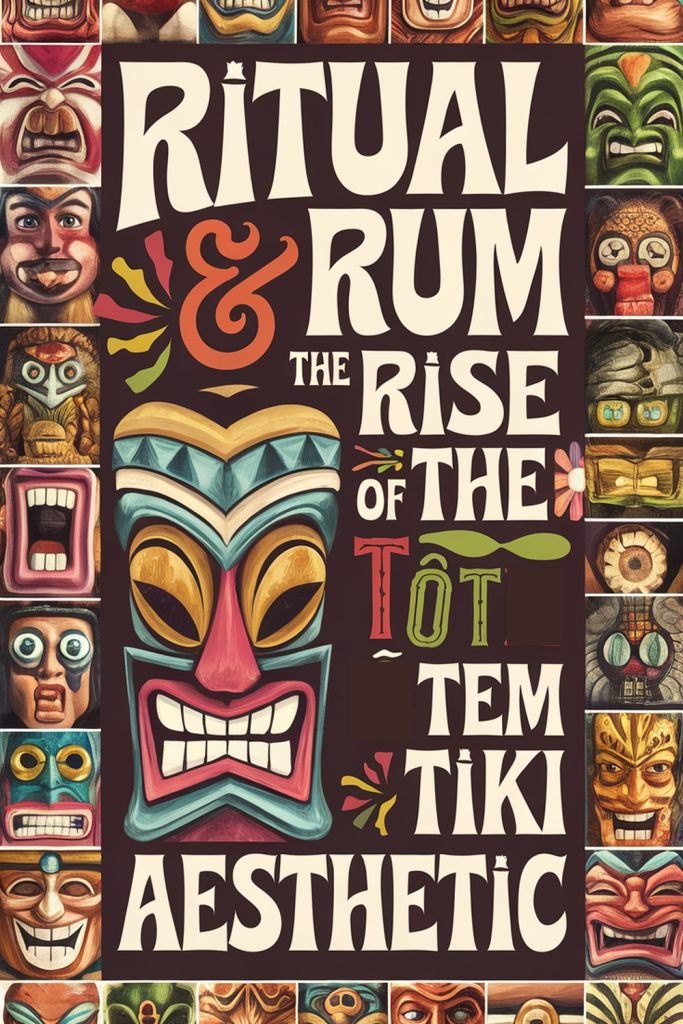
Ritual & Rum: The Rise of the Tótem Tiki Aesthetic

Where ancient symbols meet midcentury cool—and reemerge in today’s outdoor spaces with new meaning, mystery, and mixology.
Escapism has a shape. And sometimes, it has a face.
Somewhere between firelight and foliage, carved wood and swirling rum, the tótem tiki emerged—not just as an icon of tropical fantasy, but as a storytelling object rooted in ancient cultures and revived in backyard bars across the world.
From vintage Polynesian pop to sleek modern sculpture, the tiki totem aesthetic has evolved, adapted, and sparked fascination with its expressive faces, mythical vibe, and undeniable presence. This is not just decor—it’s a mood. A ritual. A conversation piece with centuries of history behind its grin.
Whether you’re designing a full-scale home tiki bar or placing a single carved pole under a palm, it pays to know the roots and meanings behind the motif. Let’s explore the faces, symbols, and stories behind the tótem tiki aesthetic—and how to use it with creativity and respect.
Totem Tiki Culture

The tótem tiki traces its origin to the carving traditions of Polynesia and Oceania, where statues representing gods, ancestors, and spiritual forces were created with deep symbolic intent. These figures weren’t decorations—they were guardians of sacred spaces, holders of mana (spiritual energy), and vessels of oral history.
In Western hands, particularly during the American midcentury fascination with exotic escapism, these forms were reimagined—sometimes reverently, often inaccurately—as symbols of leisure, cocktails, and a sanitized version of “tropical living.”
Today’s tiki revival offers a chance to both celebrate the aesthetic and respect the roots, blending design creativity with a bit more cultural mindfulness.
Cultural Note: When incorporating tiki elements into your home or garden, seek to appreciate rather than appropriate. Honor the traditions by learning their stories, using authentic materials, and steering away from cartoonish or disrespectful interpretations.
Totem Tiki History
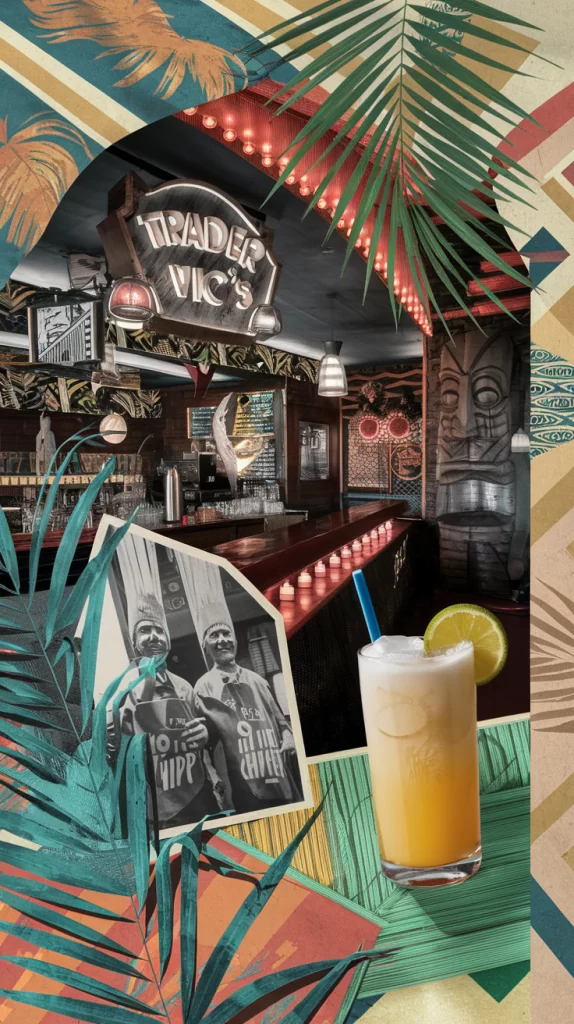
Tiki culture has had more comebacks than a lounge singer in a lava shirt.
The story begins long before Western eyes ever saw a carved tiki—stretching across the Pacific in temples, villages, and sacred groves. These ancestral statues were designed to protect, empower, and sometimes intimidate. Each island culture—from Hawai‘i to the Marquesas—had its own take on what the tiki represented and how it should look.
But it was 1930s California that launched the tiki into pop culture stardom. The rise of exotic bars like Don the Beachcomber and Trader Vic’s gave Americans a rum-soaked, bamboo-lined escape from the everyday. By the 1950s and ’60s, tiki bars were everywhere—from Vegas hotels to suburban patios.
Then came the backlash. By the ’80s, tiki was labeled kitsch. But now, with the resurgence of craft cocktail culture and design nostalgia, tiki is back—with better rum and, ideally, better understanding.
Totem Tiki Face Symbols and Meanings
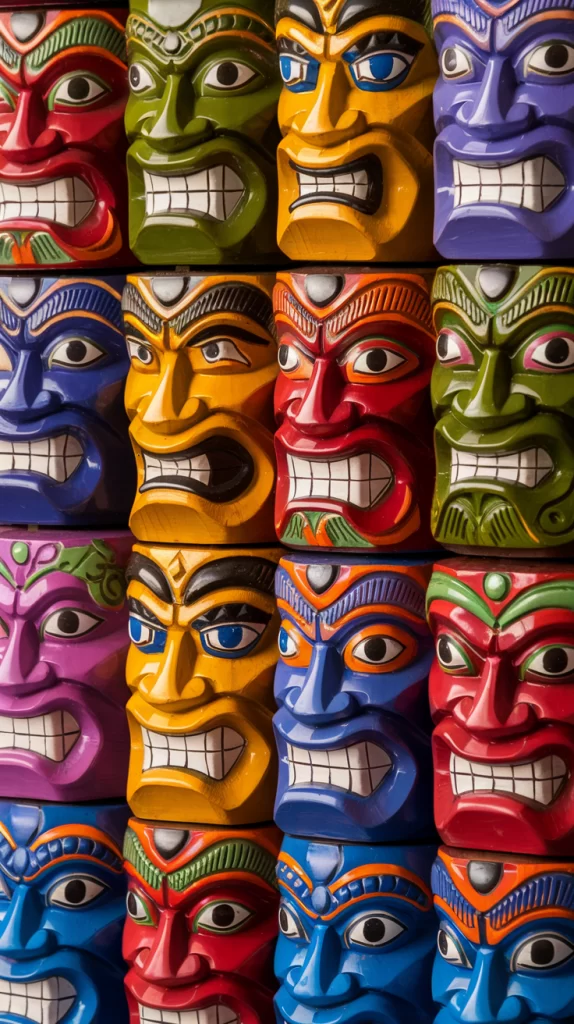
One look at a tiki totem face and you’ll know: this is no random smile.
Each carving traditionally conveyed specific emotions and intentions:
- Wide eyes and clenched teeth: a fierce guardian against evil
- Closed eyes and gentle smile: peace and wisdom
- Open mouth and protruding tongue: challenge and strength
- Stacked faces: layers of family, myth, or power
The carver’s choices—angle of the eyes, depth of the brow, shape of the nose—weren’t just stylistic, but symbolic. The figures often told stories, protected the land, or marked sacred boundaries.
Modern interpretations sometimes flatten these meanings, so if you’re commissioning or creating your own tiki, consider the face as a narrative, not just a style. What story do you want your tiki to tell?
Totem Tiki Statue vs. Pole
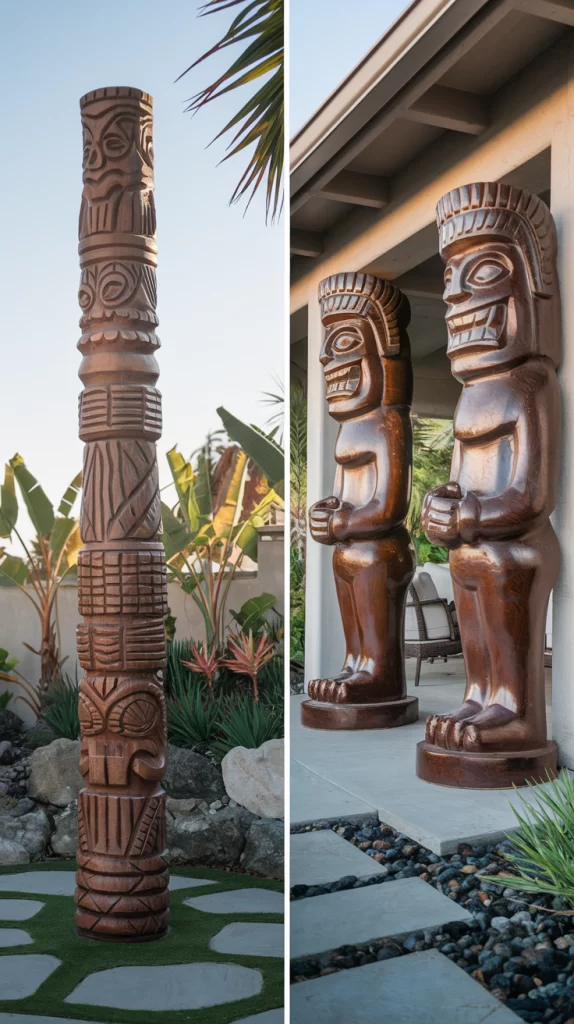
In outdoor design, you’ll often choose between a tiki statue and a tiki pole—and each offers a different visual and symbolic punch.
- A tiki statue is usually a single figure, free-standing, and works well as a focal point—flanking a bar, standing beside a lounge chair, or anchoring a fire pit.
- A tiki pole often features stacked faces or motifs, creating height and visual rhythm. These work beautifully along walkways, behind outdoor counters, or integrated into fencing or screening walls.
Think of the statue as a guardian, and the pole as a totemic timeline—stacking stories, spirits, or symbolic roles in one tall composition.
Totem Tiki Bar Design
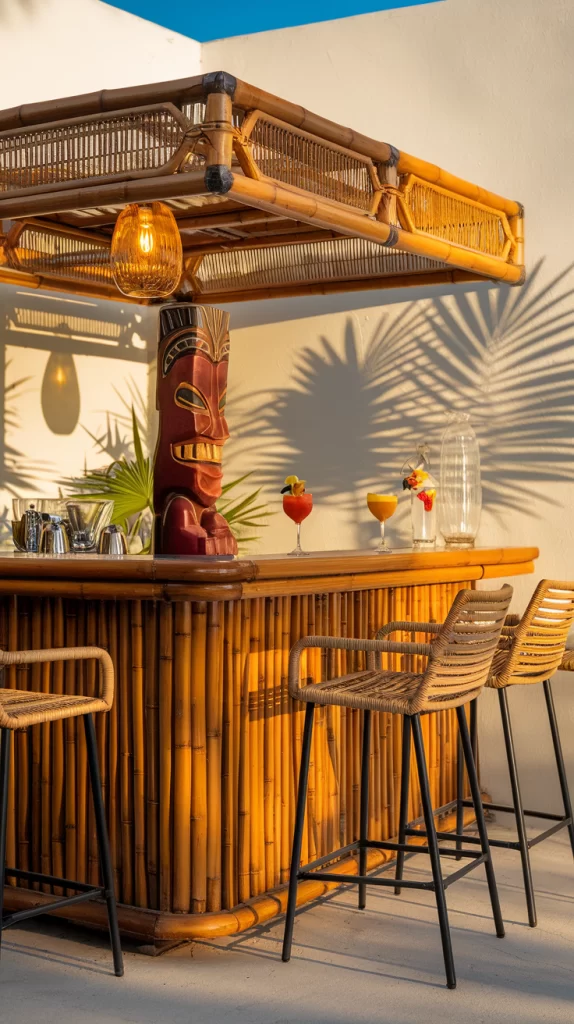
Here’s where things get fun—and functional.
The tiki totem isn’t just symbolic; it’s also decor dynamite when used with intention. In backyard bars, it can serve as:
- A structural support, built into the bar itself
- A decorative post, flanking the entrance
- A lighting element, with hidden LEDs or torch heads
- A stool base, if you want to get really custom
Pair carved totems with materials like thatch, bamboo, lava rock, or weathered wood. Surround the space with potted palms, banana leaves, and warm lighting to evoke a lush, immersive atmosphere.
And yes, cocktail ritual counts—custom drink menus, garnishes, and mugs continue the storytelling.
The Totem Tiki Aesthetic Today
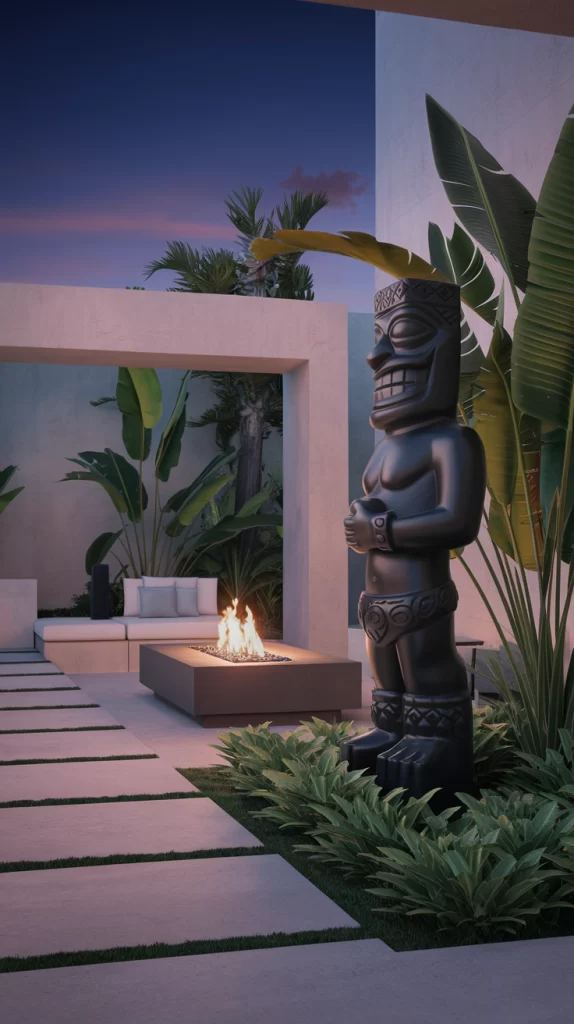
Forget cartoon faces and plastic leis. Today’s tiki aesthetic can be:
- Modern: matte black or white tiki sculptures, fire bowls, concrete and teak
- Minimalist: single bold face surrounded by succulents and stone
- Artistic: hand-carved pieces from Polynesian artists, displayed with gallery lighting
- Maximalist Retro: neon signs, vintage surfboards, rum collections, and classic bamboo overload (for the committed collector)
What matters is the balance between mood and meaning. Even one well-placed tiki can shift the vibe from backyard to sanctuary.
Where Ritual Meets Rum

The modern tiki space isn’t just about cocktails—though a good Mai Tai certainly helps. It’s about crafting a vibe that blends mythology, artistry, and social joy.
The tótem tiki invites you to step out of time, to create a space that feels otherworldly yet intimate. Whether you lean vintage or modern, bold or serene, the tiki totem remains a powerful symbol—of escape, of expression, of storytelling carved in wood.
So light the torches. Pour the rum. And let the ritual begin.

